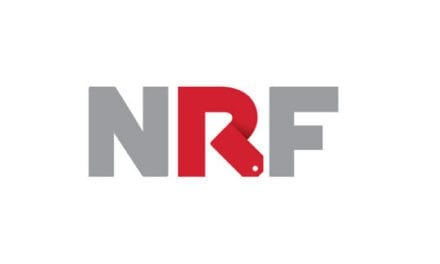By Corey Henriksen, Acquisition and Refinance Capital, Inc.
Obtaining good financing is crucial to any downstream petroleum business, whether retail or wholesale. Done poorly, it will force a company out of business. Done well, it will add big dollars positively to the bottom line.
There are good reasons for taking financing very seriously right now in growing your business. Historically, interest rates are very low. Properly structured financing provides an interest expense that is a minimal business cost when you look at the possible profit, both short-term and long-term, that the financed opportunity generates.
Opportunities for acquisition abound whether they are individual site purchases, troubled asset purchases, consolidator spin offs or major oil company real estate sales.
You may be a dealer who is seeking acquisition funding or ground-up construction financing; reorganizing your capital structure to line up long-term financing with long-term assets, seeking a new banking relationship for lines of credit or term loans; or trying to free up equity in assets.
You may be a distributor who has the same needs as the dealer cited above. In addition, you may be focused on increasing capacity for fuel purchases through increasing accounts receivable lines. Or in your efforts in building volume and signing up supply agreements, you also may have dealers who need financing for imaging and upgrades.
Lenders: Different Horses for Different Courses
The good news is that there are many funding sources looking at downstream petroleum in their continual search for quality loan product. Many lenders are now much more comfortable with financing convenience stores, gas stations and truck stops.
As you survey the spectrum of lenders, from commercial banks (whether national, regional or local) to pension funds, insurance companies and specialty lenders–keep in mind that “one size does not fit all.”
You need to make sure that your loan request package is in front of the right lender. Some lenders finance real estate only; some finance a combination of real estate and businesses; some finance equipment only while still others focus only on working capital and accounts receivable.
In addition, size matters. Not only would you go to different lenders for different types of financing, but also for different loan sizes. Some lenders specialize in single site acquisitions; others in multi-site multi-profit center capitalizations. Some lenders specialize in SBA, while others focus purely on conventional loans. Community banks tend to be more single-asset real estate focused and work within their local area footprint, while national and large regional banks utilize broader-based covenants and structures within a large geographical area.
Getting Lenders Interested
Once you’ve determined your objectives and the proper lender type for the assets to be financed, then focus on the needs of the particular lenders you plan to approach. As a general rule, any lender, whether it’s a large national institution or your brother-in-law, will look to the following guidelines:
- Be able to show that you have seasoned experience in operating a downstream retail petroleum business.
- Be able to prove up sufficient cash flow to cover the annual debt service (expressed as a debt coverage ratio; usually 1.25 to 1 for gas stations).
- Be able to show sufficient asset value of the collateral for the loan (expressed as an LTV ratio; anywhere from 60% to 85% for gas stations).
Most importantly, present a story–each transaction is a snowflake. Contrary to the popular belief held by some retail petroleum operators, bankers are people just like us whether they are loan officers, underwriters or members of the credit committee. They have stacks of packages on their desk, but throughout all the numbers crunching they keep in mind that they are lending to people, whether it’s a large corporate team or a small family business. So make your story personable and memorable.
Getting the Good Rates and Good Terms
Obtaining good rates and terms for your retail petroleum business is not rocket science, it’s just good common sense (and doing your homework).
Prepare a package that explains your business and focuses on what you want to accomplish in obtaining the financing. Determine what’s important to you, whether it is rate, term, guarantees, etc. Explain the nuances of your profit centers; i.e., what happens to profit when prices go up and credit card fees increase. Remember, lenders have to understand your business, or they will not lend.
Determine and then place your package in front of the right lenders with regard to type of financing (equipment vs. real estate) and size of financing (single unit vs. multiunit multi-profit), etc. Trying to fit a square peg in a round hole will only waste your time and effort.
Present a package that addresses each specific lender’s requirements. Do your homework. Research what the lender requires. Address those requirements in your presentation. Give the information to them in an easily manageable format. Prove it up with good books and records.
Competition is good. Present your package to a number of qualified lenders. Similarly situated lenders have different appetites and requirements, costs of funds, etc. Lenders are in the business to lend. They will start sharpening their pencils, especially when they realize they are in a beauty contest.
Excellent financing is available today when you want it, for what you need and at the right rates. With the proper financing in place, your business will fund equity and profit growth for many years to come; whether you are focused on stringent efficiency on a few carefully monitored sites or unbridled expansion into new markets.
 Corey Henriksen is Managing Director of Acquisition and Refinance Capital, Inc., a firm founded for the sole purpose of obtaining numerous capital alternatives for wholesale and retail owners and operators in the petroleum industry. Corey can be reached at (949) 481-8500 or www.AcqRefCap.com.
Corey Henriksen is Managing Director of Acquisition and Refinance Capital, Inc., a firm founded for the sole purpose of obtaining numerous capital alternatives for wholesale and retail owners and operators in the petroleum industry. Corey can be reached at (949) 481-8500 or www.AcqRefCap.com.









